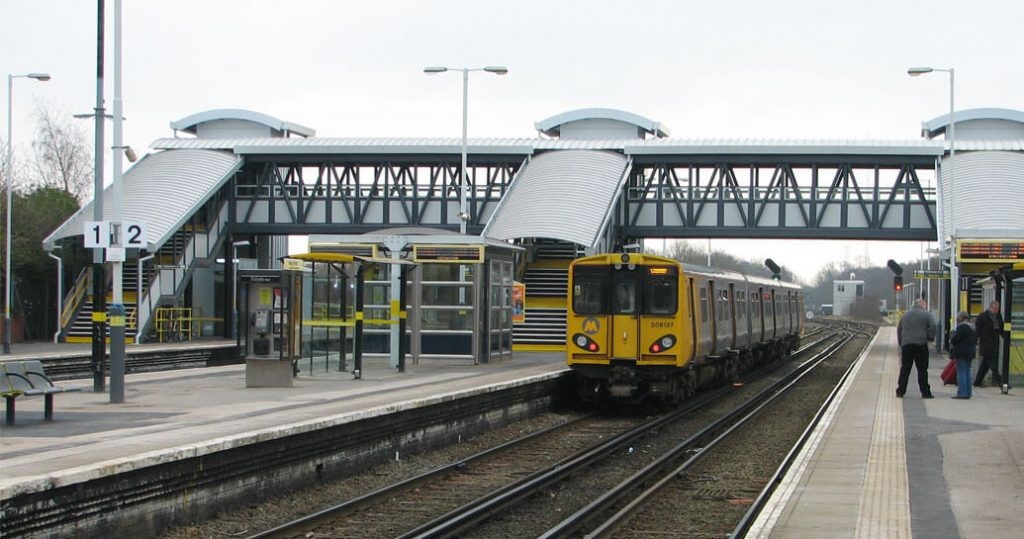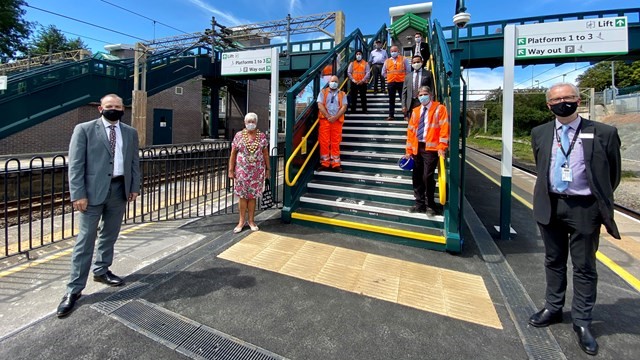
The majority of todays railway was built in the Victorian era. A time known for great industrial progress but with little view of the needs of the existing population with accessibility needs. The funders and sponsors of the day were not designing for future generations who would both live longer and value accessibility as a human right.
The Access for All Programme launched in 2006 with a mandate to take direct action and make the railway a viable transport mode for many more people by providing accessible routes at stations. The programme has seen government funds of almost £900m committed to accessible routes and accessibility improvements at almost 2000 stations across Great Britain.
Access for All launched against a backdrop of legislation that mandated more accessible infrastructure including looking beyond disability as being about more than access for wheelchairs to buildings. Now seen as a roaring success and delivering consistently to time and budget whilst also outperforming its business case it is easy to forget that success now was born from complex challenges.
So, what were those challenges and what can the rest of the industry learn from the solutions?
What were the challenges?
Access for All work is by its very nature emotive. With a budget funded by taxpayers and requirement to deliver the most impact for the spend, making choices about which stations should be selected is highly political and emotive. Rail investment choices can often be quantified in terms of capacity, economic growth and engineering. The rights of disabled people to travel independently is far less numeric. Rightly so every elected official would like for their constituents to benefit. Balancing that political context was a significant challenge.
Working at stations
Stations are a complex area to deliver projects within. During Access for All delivery the stations have to remain open throughout. They deliver work in a safety critical environment whilst managing passenger flows and mitigating any operational impacts caused such as moving gatelines or reduced platform widths.
Stations often have many historic noncompliance which are permitted through grandfather rights. Delivering an Access for All scheme can trigger the need to rectify these. The balance between appropriate rectification and the whole budget becoming a stations repair fund is a tough balancing act for the team.
Maintaining the success
Significant changes are only to be expected over the course of 15 years and 3 control periods. Throw into the mix the reclassification of Network Rail, the Hendy Review and a global financial crisis in 2007 and you start to get a view of the external forces that could have impacted the programme.

What can you learn from access for all?
Strategy, Benefits and Business Case
The Access for All team have a clear vision of what benefits they are delivering. They understand how everything that they do relates to the business case and the sensitivity around it.
Scope, Scope, Scope
Like every project the team get asked ‘whilst you are there could you just…..’
The team relentlessly defend the scope and reject scope creep which is detrimental to the business case. They balance any change requests against what any potential change means for:
- Benefits
- Business case
- Ability to deliver time, cost and quality
ACTION POINTS: Thoroughly understand the relationship between benefits, business case and scope before proceeding. Assess all of the impacts of scope change and test against your business case before agreeing to it.
Culture
Access for All sounds like a complex governance structure. It is funded by DfT as Client, nationally Sponsored as Programme by Network rail and delivered via Projects in each Network rail region with a local sponsor and delivery team. However, in reality it works well as traditional P3M set up and runs smoothly. Everyone knows and understands their role. The governance is specific to the programme and runs with a portfolio level risk management approach.
Relationships
The team credit their success to the relationship that they have built and maintained. They have put energy and effort into building trust and treat each other with respect. The shared vision is a driving force and the shared care for the delivery of the benefits is an underpinning value that motivates the team.
ACTION POINTS: Plan how you build key relationships such as that between a client and a sponsor. How will you build, rapport, trust & respect. Diary discussions to talk about how well that is going and take corrective action when it is not going well.
Agree how each of you will manage the external stakeholders throughout the project and in response to external and internal changes that occur and influence your project.
Try and build a forward plan of work to allow a team to develop and embed these ways of working into a long term programme. Where possible plan for high-functioning teams to progress from project to project.
Capability
The capability of the individuals cannot be overlooked as a critical success factor. Having people who understand the work from a variety of perspectives and who have significant experience in their field is a valuable asset.
ACTION POINTS: Capability or capacity gaps in the team are a risk to the benefits being delivered. Look at what you are trying to deliver and check that you have the right expertise and experience.
If you have a gap you should consider that as a risk and plan how you will mitigate that risk. Will you buy, borrow or build the capability that you need or proceed at risk?
Have the right governance in place for the nature of the work; delegate decision making to right level relative to risk.
Be adaptable in making appropriate applications to deviate from standards where new techniques or technologies emerge, but be realistic about what might be achieved and take a balanced view of the life-cycle cost impacts.
Engage with the community; with representative user groups at planning stages, and then the users while works are progressing so that the long term value of disruption is communicated. Early engagement helps build ownership, support, and brings access to local knowledge.